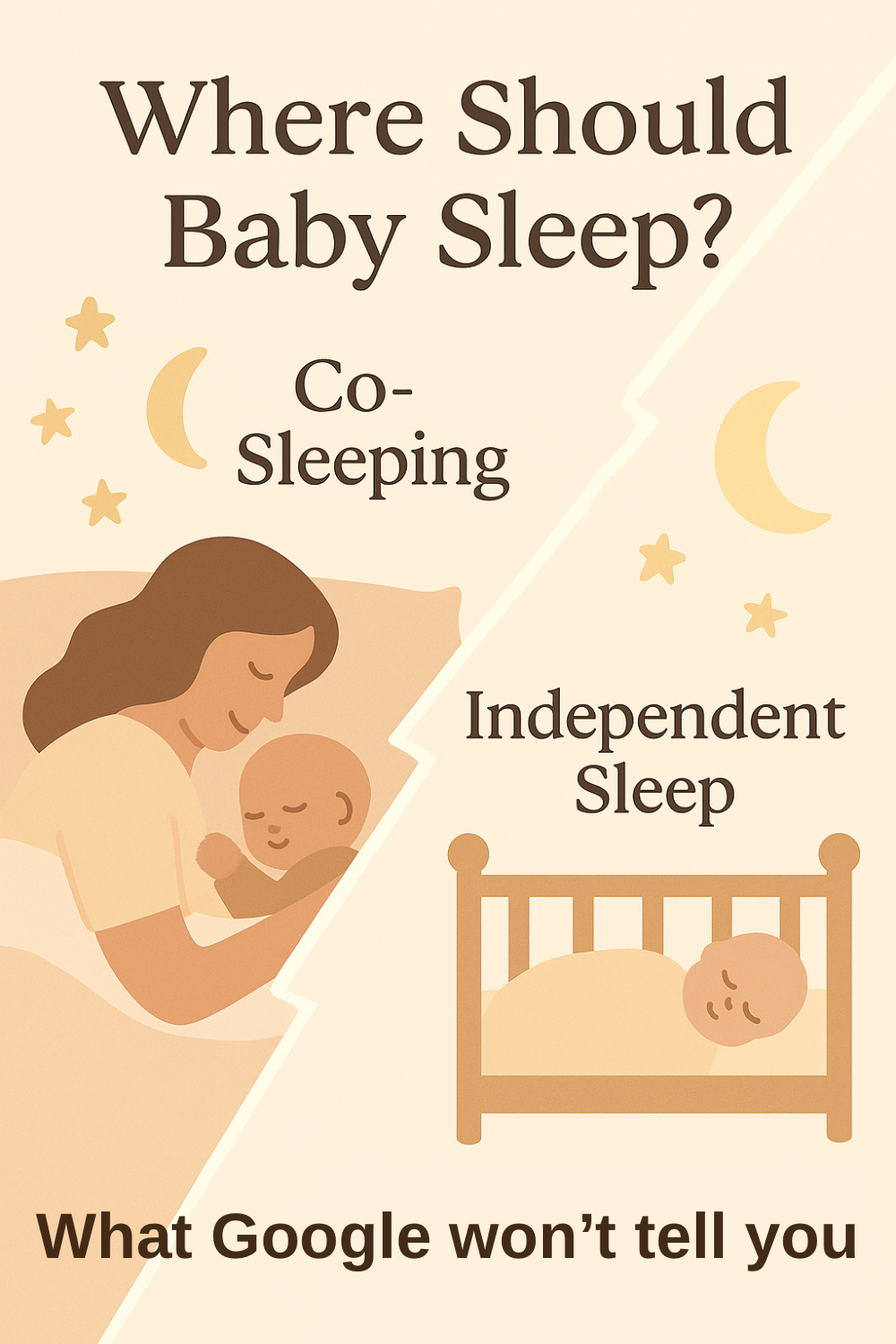Hey, sweet mama. I see you—tired eyes, a heart full of love, and maybe a little overwhelm as you navigate those early months with your little one. The sleep debate—co-sleeping or independent sleep—can feel like a battlefield, but it doesn’t have to be. You’re doing your best, and that’s enough. This guide is here to hold your hand, offering a warm, no-judgment look at both options. Let’s explore together, with science and real stories, so you can find what works for your family. Ready? Let’s dive in.
Co-Sleeping: Sharing the Bed, Building Bonds
What It Is
Co-sleeping means your baby sleeps close—whether in your bed (bed-sharing) or in a bedside bassinet or co-sleeper. It’s that cozy closeness many mamas crave.
The Pros
Research backs this up: a 2014 study from the Journal of Developmental & Behavioral Pediatrics found co-sleeping can boost breastfeeding success and help regulate a baby’s breathing and heart rate. Plus, it’s pure magic—those midnight cuddles can melt stress away for both of you. “I felt so connected to my son,” shares Jenna, a mom of two. “Knowing he was right there gave me peace.”
The Cons
Space can be tight, and safety is key. The American Academy of Pediatrics warns that bed-sharing increases the risk of SIDS if not done carefully (e.g., no soft bedding or smoking). Some mamas also find it harder to get uninterrupted sleep. It’s not a flaw—it’s just a trade-off to consider.
Real Voices
Pediatrician Dr. Sarah Mitchell says, “Co-sleeping works best when it’s intentional—safe setups make all the difference.” Families with newborns or those prioritizing attachment parenting often thrive here. Think busy mamas who breastfeed or single parents craving that extra closeness.
Who It Suits
This shines for families who value physical bonding or have limited space. If you’re a night-owl mama who loves that skin-to-skin feel, co-sleeping might be your sweet spot.
Independent Sleep: A Space to Grow
What It Is
Independent sleep means your baby has their own sleep space—like a crib or bassinet in a separate room or corner. It’s about giving them (and you!) a little room to breathe.
The Pros
Studies, like one from the National Sleep Foundation, show babies in their own space often develop longer sleep cycles by 4-6 months. For mamas, it can mean reclaiming some personal rest. “I finally slept through the night again,” says Maria, a first-time mom. “It was hard at first, but worth it.” Plus, it sets a foundation for self-soothing skills.
The Cons
The transition can bring tears—yours and theirs. A 2021 study noted some babies take weeks to adjust, and it might feel lonely at first. It’s not a failure; it’s just a different rhythm.
Real Voices
Sleep consultant Lisa Hayes advises, “Start with short separations and build up—patience is your superpower.” This approach often clicks for families with older kids, structured routines, or mamas needing solo recharge time.
Who It Suits
If you’re a planner mama or live in a bigger home, independent sleep might feel like a gentle next step. It’s perfect for those who thrive with boundaries and a bit of “me” time.
Your Heart Knows the Way
Oh, mama, there’s no one-size-fits-all here. Whether you choose co-sleeping’s warm embrace or independent sleep’s quiet independence, the “right” choice is the one that lets you and your baby thrive. Trust your instincts—they’re wiser than you think. Lean on your partner, a friend, or even this community. You’ve got this.
Before you go, why not grab a little help? Download our Newborn Sleeping Guide to ease those early nights, or explore the Mama Nest Toolkit for more tips tailored just for you. You deserve the support—click below and let’s keep this journey gentle together.
[Guide]

